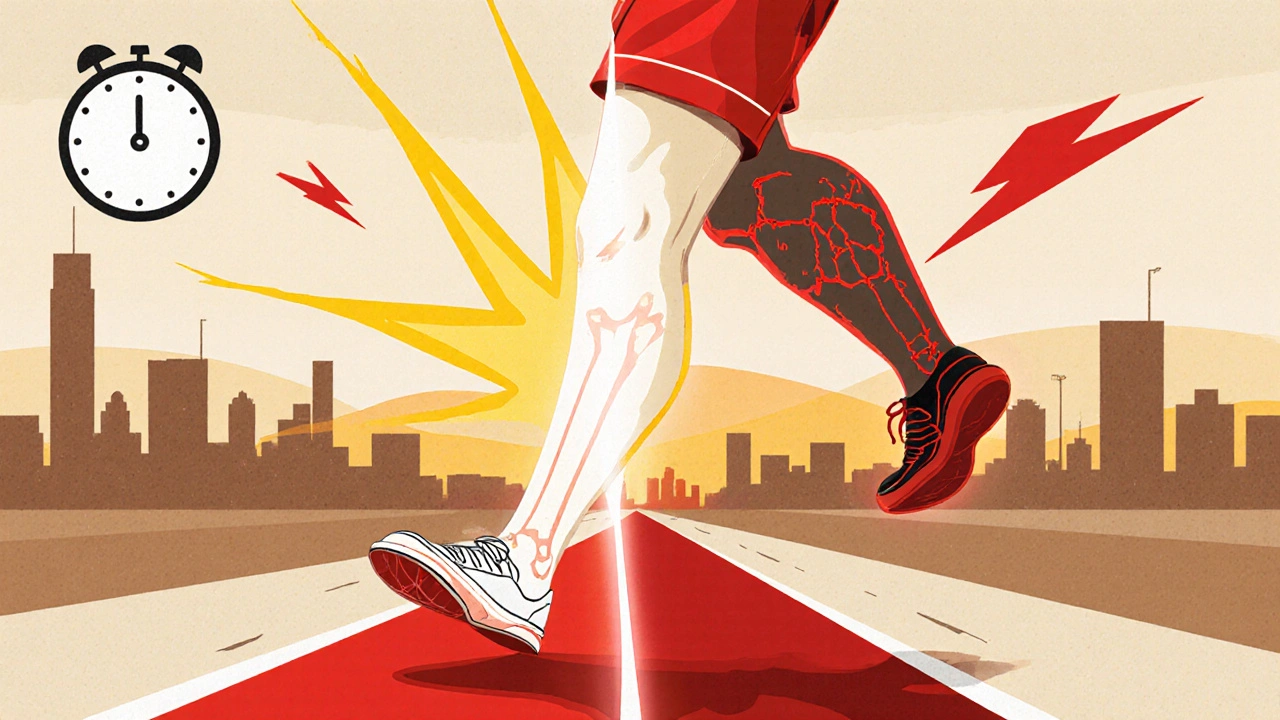Stress Fractures: Causes, Risks, and How to Recover Safely
When you keep pushing your body—running, jumping, or training too hard without enough rest—you can develop a stress fracture, a small crack in a bone caused by repeated pressure, not a single injury. Also known as fatigue fracture, it’s not a dramatic break, but it can sideline you for weeks if ignored. Unlike a broken bone from a fall, stress fractures sneak up on you. They’re common in runners, dancers, military recruits, and even people who suddenly start walking or standing more. The bone doesn’t have time to repair itself between loads, so tiny cracks build up until pain becomes impossible to ignore.
These injuries mostly happen in the lower leg, especially the tibia and metatarsals, because they bear the most weight. But they can also show up in the foot, hip, or even spine if you’re doing high-impact activities. Risk factors include sudden increases in activity, poor footwear, low vitamin D, and eating disorders that weaken bones. Women, especially those with irregular periods, are at higher risk due to hormonal changes that affect bone density. It’s not just athletes—it’s anyone who changes their routine too fast.
Most people feel a dull ache that gets worse with activity and better with rest. Swelling or tenderness over the bone is common. But here’s the trap: many think it’s just muscle soreness and push through it. That’s how a tiny crack turns into a full break. The key is early recognition. If pain lingers for more than a few days after you cut back, get it checked. X-rays might not show it at first—sometimes you need an MRI or bone scan to confirm. Treatment? Rest. No running, no jumping, no high impact. Often, you’ll need a walking boot or crutches. Healing takes 6 to 8 weeks, sometimes longer. Skipping this means risking a worse injury down the line.
What you’ll find below are real, practical posts about how stress fractures connect to other health issues. You’ll read about how nutrition affects bone repair, why certain medications can slow healing, and how conditions like osteoporosis or thyroid disorders make you more vulnerable. There are guides on safe ways to return to activity, what to eat to rebuild bone strength, and how to spot when pain is more than just tired muscles. These aren’t theory pieces—they’re based on real patient experiences and clinical data. Whether you’re recovering from one, trying to avoid it, or helping someone who is, this collection gives you the clear, no-fluff facts you need to get back on your feet without repeating the same mistake.

